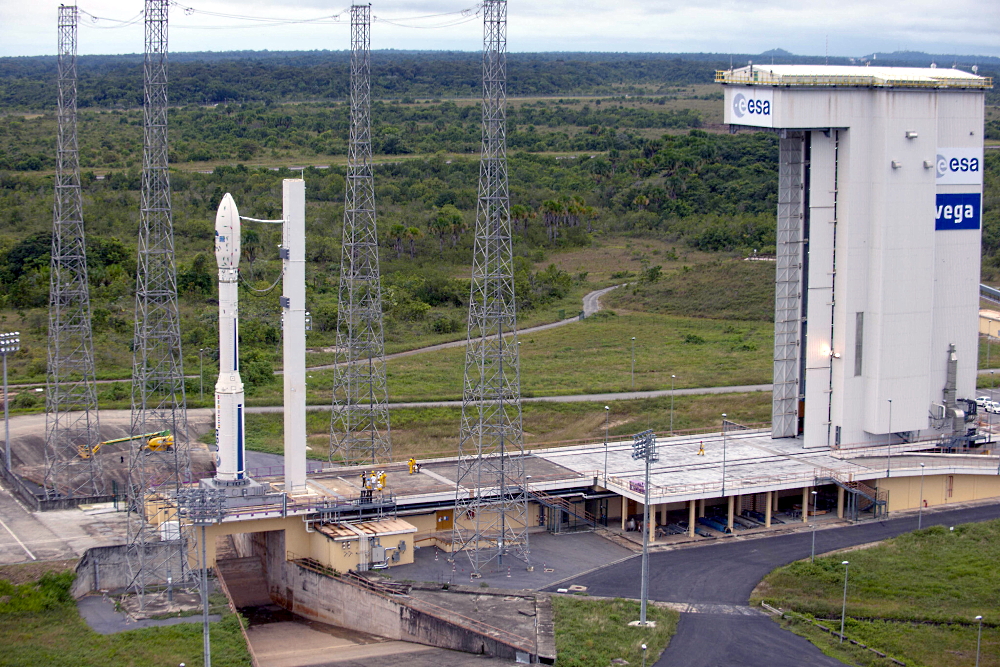
Vega before first launch, ESA photo
Crash
On July 11, 2019, in the third minute of the flight, the torch of the running engine simply went out.
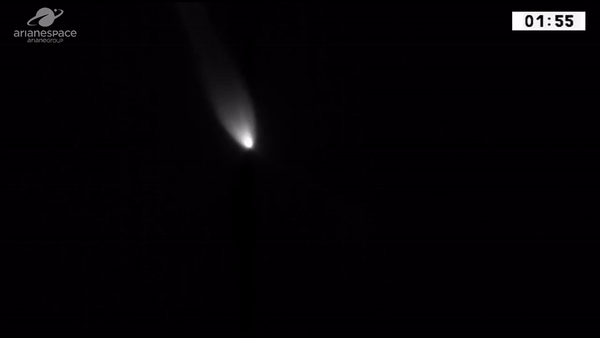
This was already a disturbing sign. And when the speed began to drop in telemetry, and the trajectory deviated noticeably from the calculated one, it became clear that the missile with a payload (reconnaissance satellite of the United Arab Emirates) was lost. It is curious that if the French announcer almost immediately began to report an abnormal trajectory, the English commentator ignored what was happening for a long time and told abstract things. The story of the crash of Ariane 5, sad as it may be, has largely repeated itself. The official announcement of the accident followed in the broadcast only a few minutes later.
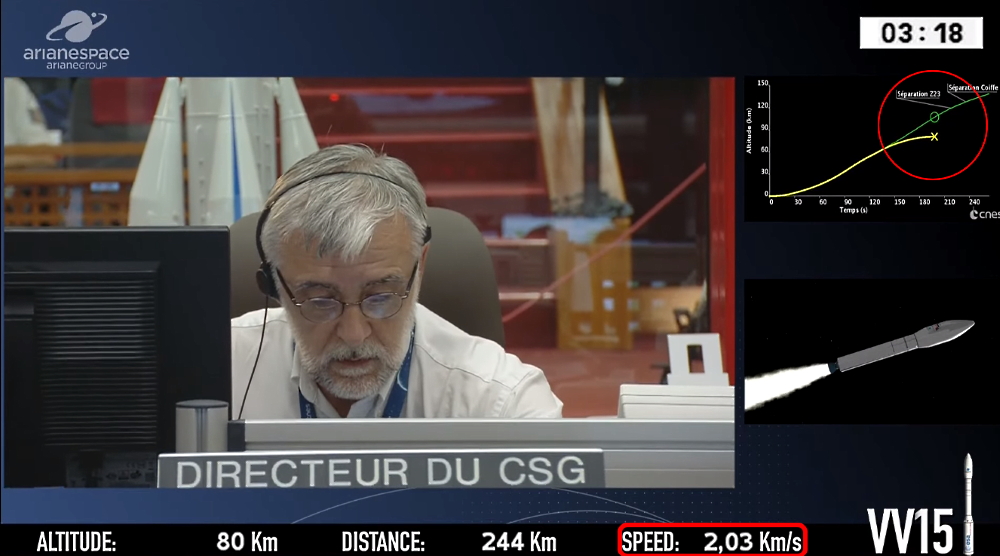
Frame from broadcast
Night darkness did not allow to observe the rocket, and the quiet extinction of the torch suggested the completely absurd hypothesis of spontaneous engine shutdown. The second stage is solid fuel, they just do not go out, so this certainly could not be the reason. From open data, it was only possible to draw a conclusion about some problem that appeared in the region of 120 seconds of flight, the result of which was the absence of second stage thrust. It was necessary to wait for the results of the official investigation.
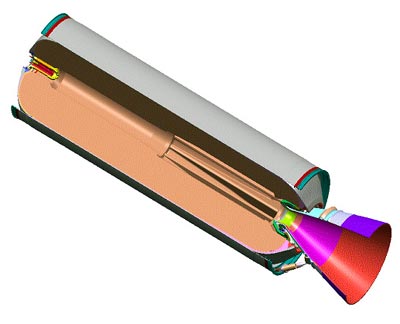
The second stage of the Vega launcher in the context of the

Installation of the second stage when assembling the rocket before launch
The results of the investigation were released in the fall. It turned out that the cause of the accident was the destruction of the thermal protection of the upper end of the second stage engine housing Zefiro 23 - hot gases from the running engine burst upward and led to the destruction of the rocket. The exact cause of this destruction has not been established, but a manufacturing error is suspected. The second stage has the highest pressure in a running engine, 92.7 atmospheres, materials work to the limit for maximum lightness of construction, and a small violation of the technology can have the most unpleasant consequences. The potential weak spot was corrected simply by increasing the thickness of the thermal protection and taking other, not specifically mentioned measures.
Isameses

The fourth step and the payload on the SSMS dispenser, ESA image A
new upcoming launch will be the universal Small Spacecraft Mission Service (SSMS) dispenser. Czech SAB Aerospace and Italian Bercella have developed a universal modular satellite dispenser for Arianespace. It aims to make ESA competitive in the market for the associated launch of small satellites. Six possible configurations make it easy to supplement any satellite with a passing load. And there is demand - microsatellites occupied about half of all launched in 2019. And recently SpaceX announced a similar program of passing launches, and Elon Musk said that contracts for it had already been signed for more than a hundred satellites.

ESA illustration
In this launch, 53 satellites will fly, including the first Slovenian NEMO-HD, the student UPMSat-2 of the Polytechnic University of Madrid, the Canadian GHGSat-C1 for monitoring greenhouse gas emissions and others.
More Veg
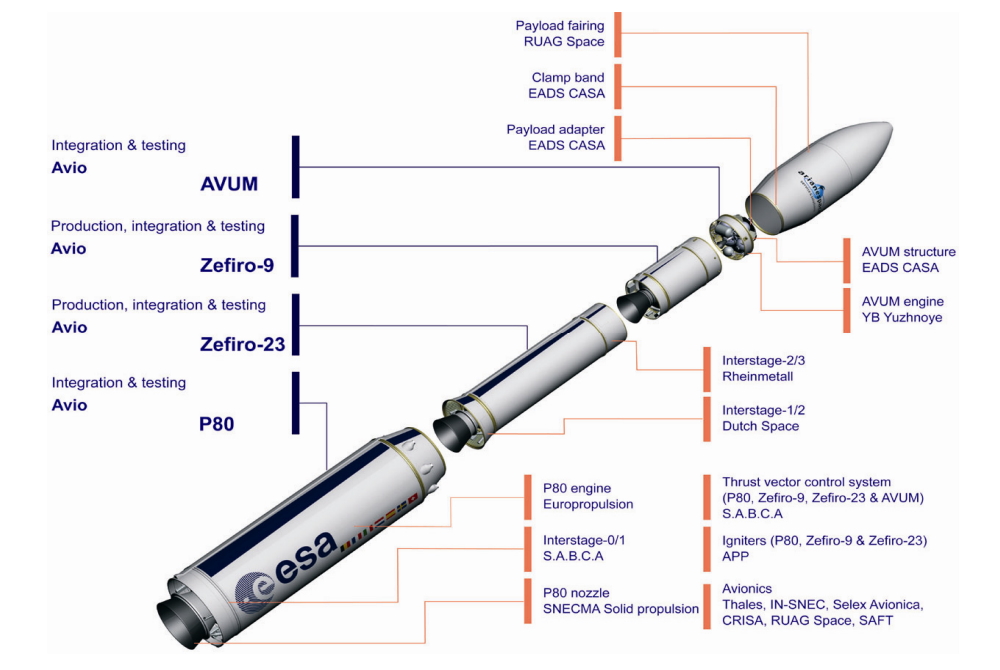
Vega with component manufacturers, ESA image
The Vega booster itself is developing quite actively. This year or next, a new modification of the Vega-C should go on its maiden flight. The first two solid-propellant stages will be replaced with more powerful ones, which will increase the carrying capacity from 1500 to 2200 kg into the sun-synchronous orbit. Work is underway to create new options for the payload - VEnUS with an electric jet engine will be able to launch satellites into higher orbits, to the Moon or be used in servicing satellites in orbit. And the Space Rider reentry vehicle based on the IXV that successfully flew in 2015 will be suitable for payloads that require a return to Earth.

Illustration by ESA
And in the mid-20s, another update is expected. At Vega E, it is planned to replace the third (solid fuel) and fourth (liquid) stages with a liquid M10 operating on environmentally friendly liquid oxygen / methane components. An involuntary consequence of such a decision will be another deterioration of the situation for the Ukrainian Yuzhmash, which now produces the RD-843 engine for the fourth stage of AVUM, which operates on toxic heptyl / amyl.
As a result, it is planned that Vega will be able to launch 2,200 kg into a sun-synchronous orbit for about $ 40 million and will occupy an intermediate position between the Electron ultralight launch vehicle (up to 225 kg for the SSO for $ 7 million) and the Falcon 9 (18,200 kg for the SSO for $ 62 million). ).